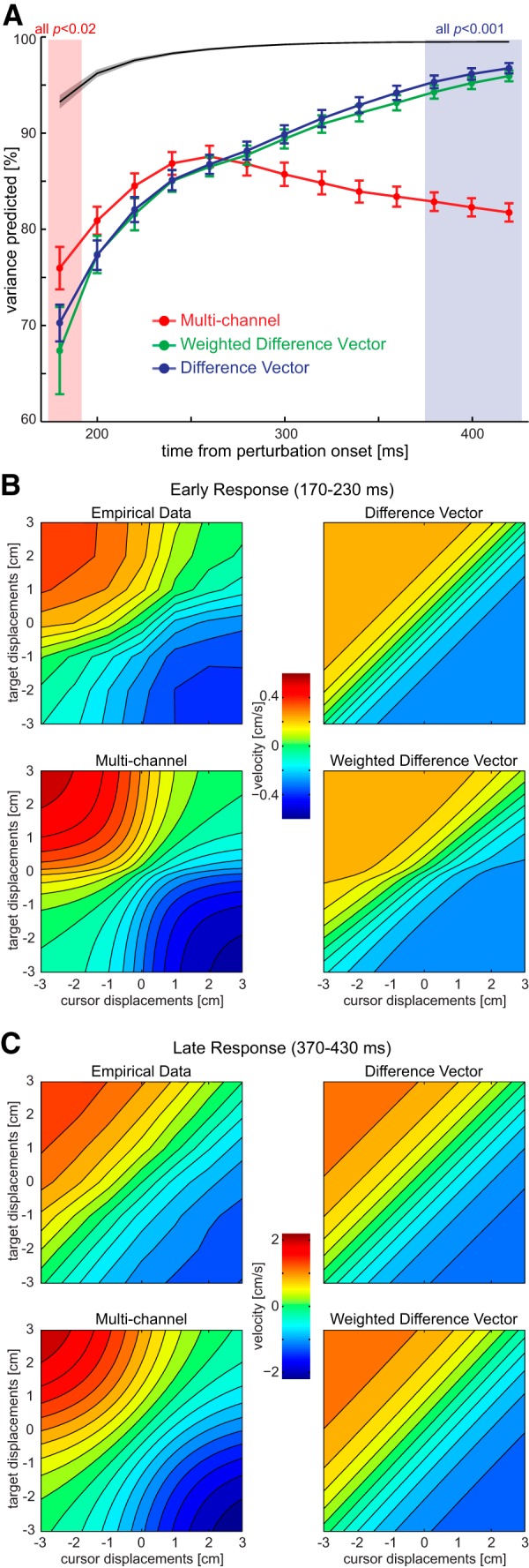Figure 7.

Time course of model fits based on velocity data on the trials in which subjects were free to move. A, Predicted variance for the 36 combined conditions for each model as a function of the time from perturbation onset (±SEM). The black line indicates the noise ceiling, i.e., the maximal predictable variance given the intrasubject variance throughout the time. The proportion of variance predicted developed differentially for the three models over the time course of movement (interaction model by time, F(24,456) = 29.417, p < .001). Shaded regions indicate the early and late time periods. The p values above those quantify the comparison difference vector versus the multichannel model (two-sided t tests). B, Velocity responses during the early time window (170–230 ms after perturbation onset) plotted across all cursor and target displacements. Top left, Experimental data. Top right, Predicted responses of the difference vector model. Bottom left, Predicted responses from the multichannel model. Bottom right, Predicted responses from the weighted difference vector model. Note that each participant's equal-difference vector diagonals were monotonously increasing; only their average partially displays a nonmonotonous trend. Models are fitted to each subject's average data from isolated target and cursor perturbations, and the extrapolated predictions are shown for combined perturbations. C, Velocity responses during the late time window (370–430 ms after perturbation onset) and model predictions.
